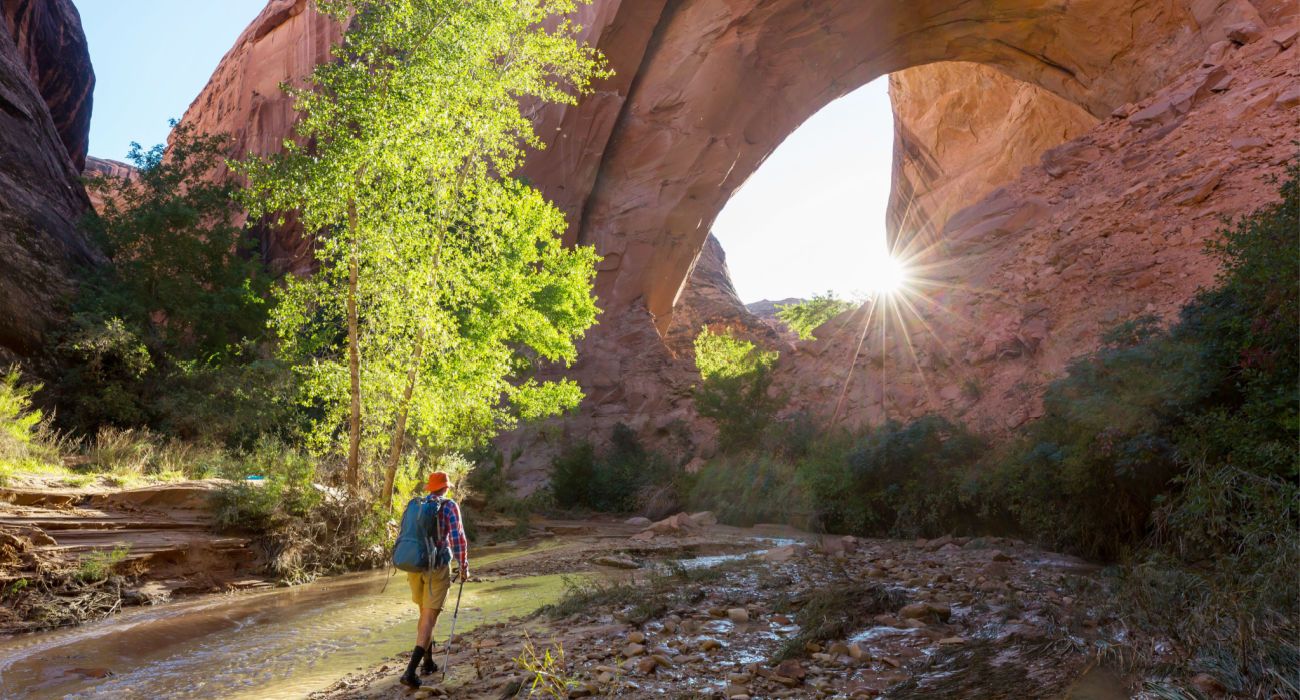Quick Links
Wrather Arch is a natural arch in the form of a cave in the Paria Canyon-Vermilion Cliffs Wilderness in northern Arizona. It is known to be the largest natural arch outside of Utah in the United States. The best place in the United States to see natural arches is in Arches National Park and also in Natural Bridges National Monument near the Four Corners.
The Wrather Arch is made of sandstone and is found in a remote part of the Wrather Canyon (a short side canyon of the greater Paria Canyon). The Paria River that flows through it is a tributary of the Colorado River. Paria Canyon is one of the United States' premier backpacking destinations, but it's not for everyone. This area is near the also stunning Glen Canyon - one of the most scenic canyons in the area beside the Grand Canyon.
Wrather Arch: America's Remote & Massive Natural Bridge In Arizona
The remoteness of the Wrather Arch is shown in that it was only discovered in the 1900s by plane. It was reached by helicopter in 1963.
- Location: Paria Canyon-Vermilion Cliffs Wilderness
It had been said that the Wrather Arch was the largest in the world outside of Utah. However, that has since been shown to not be true. Larger natural bridges have been found in China, Afghanistan, and the African nation of Chad. It was also initially reported to be much larger than it actually is, it was reported to have a span of 246 feet, but it is now known to be closer to 180 feet.
- Span: 180 Feet or 55 Meters
While Northern Arizona and Southern Utah have much the same geology, there are few natural bridges in the Grand Canyon. Most that are found in Northern Arizona are on the Navajo Nation (the largest Indian Reservation in the United States).
The shape of the arch is also unusual. It is a giant arm that reaches down over a large space that's littered with rockfall.
The Challenging Feat Of Getting To Wrather Arch
Wrather Arch is very remote and difficult to get to. So it is something only the most adventurous and most determined ever get to see. It is distinguished as being one of the least accessible natural arches of the greater region.
Despite its enormous size, finding it is also something of a challenge. As it is tucked away in the small side canyon, most would never find it unless they have a topographical map. It is located around half a mile up the side canyon (take a study map and GPS to find the right canyon).
Hikers need to be well-prepared for this adventure. Around a third of the route involves hiking through ankle-deep water (so the right footwear is essential). Also, be careful when hiking through the narrows, and watch out for flash floods.
Anyone who would like to see a stunning (and more accessible) natural bridge in the Appalachians can see the impressive Natural Bridge in Kentucky's Natural Bridge State Resort Park.
Hike The Challenging Paria Canyon Trail To Get To Wrather Arch
The only way to get to it is by backpacking for four days in the Paria River (expect plenty of wet shoes and mud). The hike starts up in Utah and crosses the state line into Arizona. Hikers need to follow the challenging Paria Canyon Trail, and the arch is near the midway point. It is around 18 miles or 29 kilometers along the Paris Canyon Trail. The total hike is around 35 miles through the Paria Canyon.
Paria Canyon Trail:
- Distance: 35 Miles (Total)
- Beginning/End: Starts Highway 89 In Utah & Finishes At Lees Ferry, Arizona
The entire Paria Canyon is managed by the Bureau of Land Management, and they supply the BLM "Hikers Guide to Paria." Note that before attempting the hike, people are required to get a permit from the BLM office in Kanab, Utah. People can obtain both day and overnight permits for the Paria Canyon. If one would like to hike the Paria Canyon, then plan in advance as there is an overnight limit on the number of people in the canyon to only 20 people.
Overnight users need to display the permit on both their backpacks and on the dashboard of their cars.

